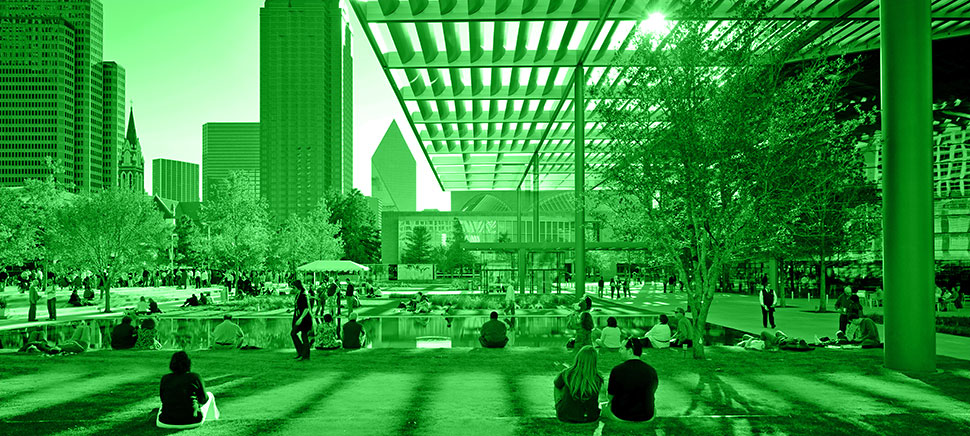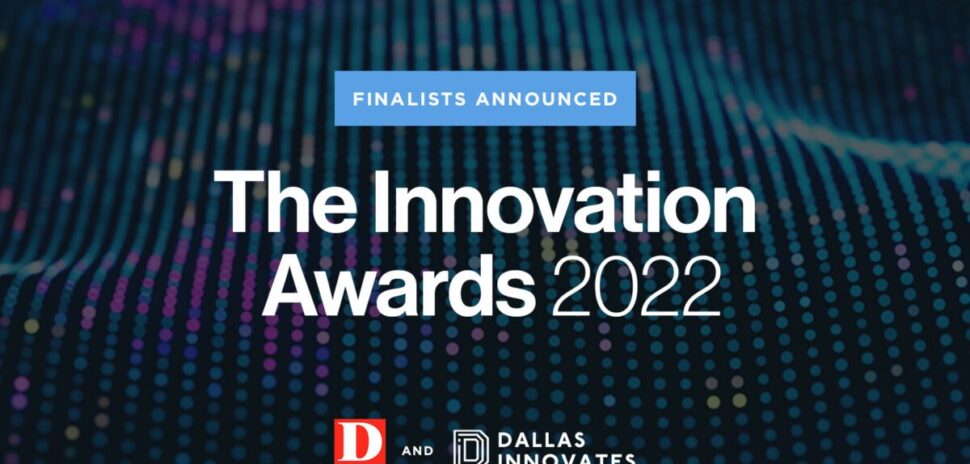Welcome to the content hub for creative news and commentary, featuring topics that range from fine arts to fashion, film to food. With constant technological evolution, budget flux, and artistic–community partnership, it’s been an exciting year for the arts in Dallas. Here’s a brief sum-up of recent creative innovation—and what we can look forward to in 2016.
The Film Industry
Janis Burkland, director of the Dallas Film Commission, works to market and develop sales strategies that attract business and foster growth of the creative media industries in Dallas —including movies, TV, commercials, music videos, documentaries, and still photography.
This year, Burkland says, has seen more television programs and commercials and fewer feature films. Some of this year’s most notable television projects filmed (at least in part) here include Queen of the South, a new series for USA Network; Mamma Dallas, an HBO pilot; The Frankenstein Code, an NBC pilot; filming for the Hulu miniseries 11-22-63; and the 50th Annual Academy of Country Music Awards for CBS. Reality-based programs include Fast N’ Loud and Misfit Garage for Discovery; Real Housewives of Dallas for Bravo; the 10th season of Dallas Cowboys Cheerleaders: Making the Team; and the season 26 finale of The Amazing Race. The movie LBJ, starring Woody Harrelson, filmed for a day in Dealey Plaza.
“This has been a year of survival,” Burkland says, noting the struggle due to the state’s budget cut of the film incentive program. “The film industry is heavily incentive-driven and highly competitive, so the rally cry locally should be foremost for restored funding and improvement of the Texas Moving Image Industry Incentive Program.”
She says that the impact of the budget cuts in the last legislative session will become more obvious in 2016. “Given that we have averaged $200 million a year in economic impact locally from this industry, it would seem worthwhile for the community to encourage support from state legislators to not only maintain, but to grow the business as other states and countries are doing,” Burkland says.
Aside from that, the industry is in flux—big studios have regained much of the control they had lost in previous years, and independent film companies are struggling.
“It’s a combination of finding out how this new world’s going to work and what’s going to last,” Burkland says. “Right now it’s about holding on till we can get over the hurdle.”
The Marketing Industry
Pete Lerma, a principal at Richards/Lerma, describes his company as a “next-generation agency”—it’s full-service and markets in print, radio, and digital. Richards/Lerma also targets Hispanics, one of Dallas’ fastest growing demographics.
Hispanics account for about 39 percent of Dallas’s population, and over the last decade, the Hispanic population of Texas has grown about 42 percent. According to Forbes, ad spending in Hispanic media went from $4.7 billion dollars to $7.1 billion dollars between 2010 and 2014.
“Virtual reality is where brands are really starting to experiment,” Pete Lerma says. “They’re trying to figure out how virtual reality interacts with consumers.”
Lerma points to gesture control and virtual reality as two important current marketing trends.
Gesture control includes products like Leap Motion and Xbox Kinect drivers, which allow people to use motion to interface with screens.
Virtual reality is futuristic sci-fi technology that allows a user to put on a headset and transport to another world.
“Virtual reality is where brands are really starting to experiment,” Lerma says. “They’re trying to figure out how virtual reality interacts with consumers.”
In addition to further growth in virtual reality technology, Lerma projects that social media marketing will hit its stride in 2016. According to the Richards/Lerma site, Hispanics spend more time on social networking sites than non-Hispanics, and BIA/Kelsey’s Consumer Commerce Monitor study reports that Hispanics are more likely to use social media for shopping.
“For us, social media is the fastest growing part of business,” he says. “So many brands are committing to social media—and in 2016, it will become a focus, rather than an experiment.” He expects this to go beyond Facebook analytics, too, with emerging platforms like SnapChat, Periscope, and Meerkat coming into play.
“We’re going to have a greater commitment to testing and creating a long-term presence in those environments,” Lerma says.
The Arts Community
Catherine Cuellar, director of Entrepreneurs for North Texas, describes 2015 as an exciting year for the arts in Dallas. In the way of theater, the AT&T Performing Arts Center teamed up with Cara Mia Theatre Company to present Broadway en Español, an audience-building project that translates one performance of each Broadway show into Spanish via headsets. (Jersey Boys in Spanish will show on December 21.)
In the way of visual art, Jackson Pollock: Blind Spots (running through March 2016) is an ambitious Dallas Museum of Art exhibition that “exploded everything people knew about Jackson Pollock,” says Cuellar, noting that it’s a huge accomplishment for Dallas to host an exhibition of this scope.
Deep Vellum, the nonprofit publisher that recently expanded into a literary arts center in Deep Ellum, is also worth mention. “In addition to bringing international voices to English speaking and reading audiences, Deep Vellum is also about the art of translation, an overlooked medium,” Cuellar says. The translation-focused publisher also launched its own bookstore on Dec. 9.
“In cities like Dallas, the cost of living is different than in a place like Brooklyn, so what we’re seeing is a more interesting creative development in these mid-size cities,” says Clyde Valentin. “We’ll arguably be a leader as this decade emerges.”
Meanwhile, SMU Meadows School of Arts launched Ignite/Arts Dallas, an initiative that seeks to focus on creativity and foster connectivity between communities.
“Not just the SMU campus community, but the city and country as well,” says Clyde Valentín, director of Ignite/Arts. Ignite/Arts launched its first site-specific collective this year, “Beware of the Dandelions,” a part visual art installation and part musical performance collective; sponsored several film screenings; and co-hosted the National Steering Committee meeting of the Latina/o Theatre Commons in Dallas.
This coming year, Ignite/Arts will organize a convening of the Southwest. “This will focus on Texas and move west—around various art and urbanism issues related to the double-digit growth the Southwest is experiencing,” Valentín says.
“We want to put artists and creatives in the middle of that conversation but include pivotal sectors, too.” Deferred Action, a play about the undocumented immigrants who arrived in the U.S. as children (written by David Lozano and produced with Cara Mia Theatre Company), will premiere in 2016. And the Nasher Prize, created earlier this year, will be awarded for the first time next year to inaugural laureate Doris Salcedo.
“This $100,000 award will be awarded annually to a living sculptor with the aim of putting Dallas on the map for sculpture,” Cuellar says. “The Nasher Prize will be the standard-bearer for visual artists in the medium of sculpture.”
As Dallas grows and evolves, Valentín is optimistic that the arts community will continue to flourish in coming years.
“In cities like Dallas, the cost of living is different than in a place like Brooklyn, so what we’re seeing is a more interesting creative development in these mid-size cities,” Valentín, a Brooklyn native, says. “We’ll arguably be a leader as this decade emerges.”
This is just a bird’s eye view of the many innovative things happening with DFW’s creative scene. Check back for more stories, and share your thoughts in the comments below.
For a daily dose of what’s new and next in Dallas-Fort Worth innovation, subscribe to our Dallas Innovates e-newsletter.
































